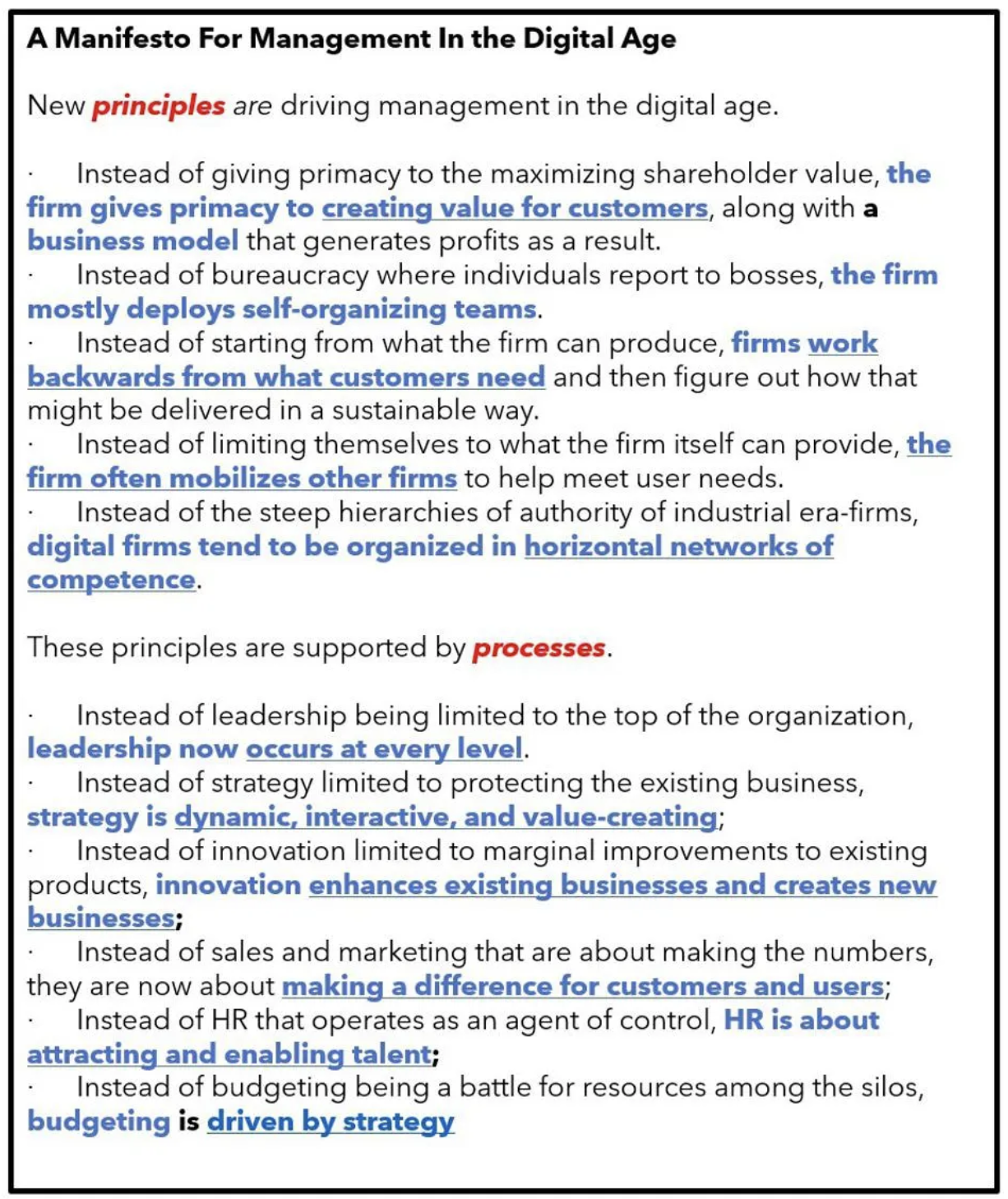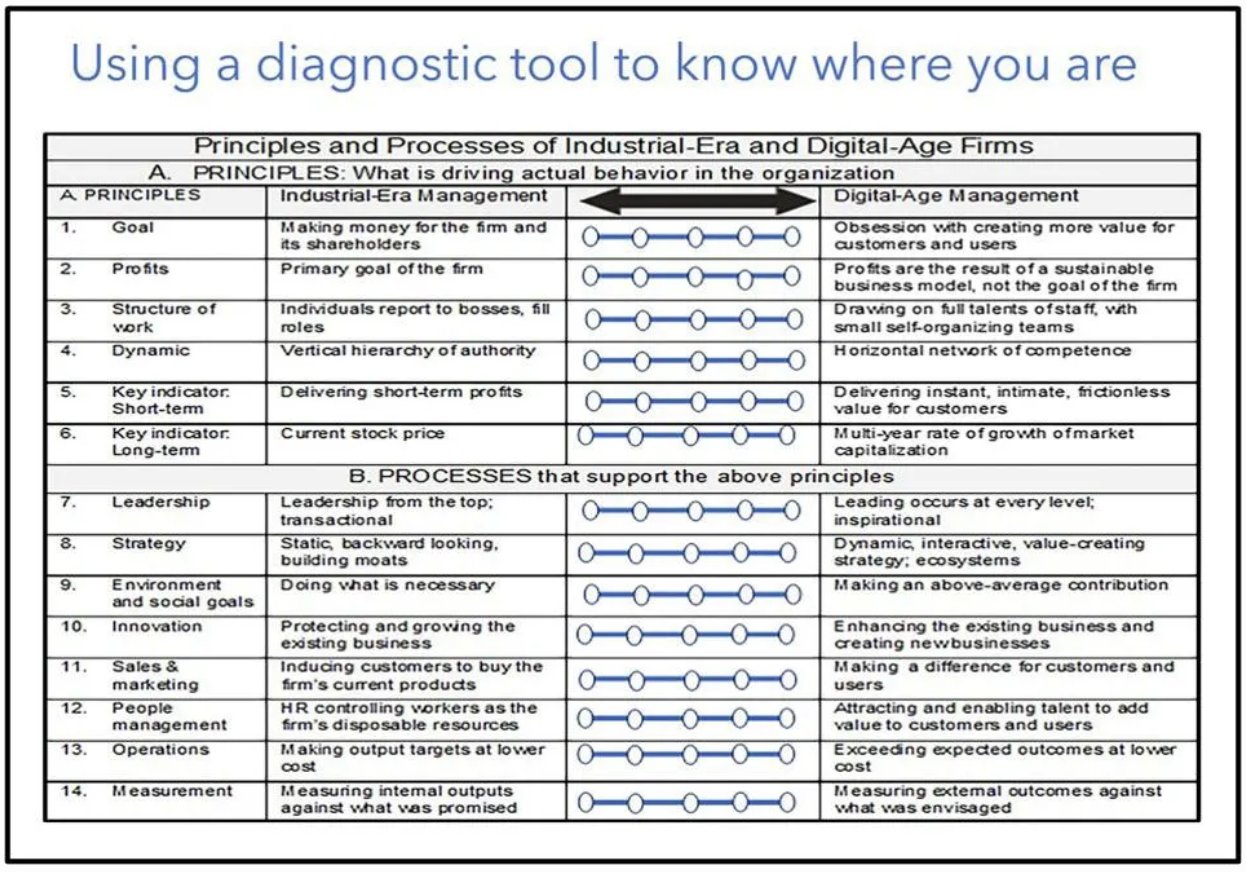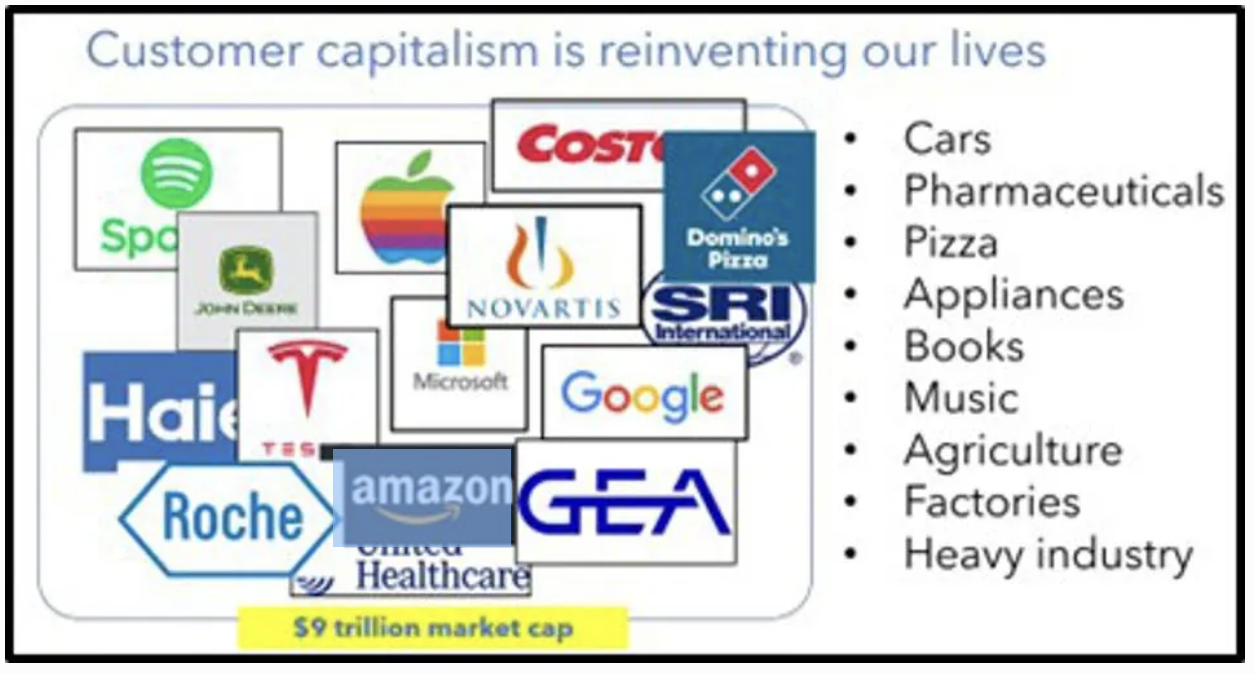
Figure 1: A Manifesto for Management in the Digital Age
What used to work, doesn’t any more. The complexity and the pace of change of the digital age are so different from the industrial-era that generally accepted management practices are now obsolete. A new set of management principles and processes are guiding the actions of the most successful firms in the world today. They are summarized in a Manifesto for Management in the Digital Age (Figure 1) and represent a guide to a prosperous future.
Background
I write many articles, but every now and then, one strikes a chord in many readers. Suddenly, many people want to read it, support it, comment on it, or point out its obvious shortcomings and flaws. Such is the case with my article last Sunday, “Why Agile Needs To Take Over Management Itself: Let’s Concede The Battle Over The Label “Agile” And Win The War Of Reinventing Management/” In just two days, the article elicited some 60,000 impressions on LinkedIn, with more than 400 reactions and 100 comments, and the traffic continues.
The article began: “Let’s face it. The age of agile has not arrived. The twenty-year effort to persuade large corporations to become Agile enterprises has largely failed. We need a new approach. Instead of trying to persuade big firms to embrace Agile, let’s raise our sights. Let’s get clear on what we really need: to take over, and in effect reinvent, the concept of management itself.”
Why The Article Resonated
Reading the comments reveals the many different reasons readers responded so strongly. Here are some of the main ones.
- Truth-telling: My 2018 book, The Age of Agile, had promised an age of agile enterprises, but no such age has materialized. The Agile Manifesto of 2001 had aimed at, and succeeded in, “uncovering better ways of developing software by doing it and helping others do it.” The Agile Manifesto was never aimed at transforming management in general. The hope that its success in software development would lead to an era of “Agile enterprises” has not been realized, for the reasons given in Sunday’s article.
- Recognizing oth The Values And The Flaws Of Agile Implementations: The article recognized that Agile at its best was brilliant in software development and the world has learned much by analogy for management in general. At its best, it involved both mindsets and the heart. At the same time, Agile at its worst created the commercialized practices of the Agile industry, a great deal of “Agile in name only”, Agile “sweatshops”, Agile “feature factories”, simplistic Agile frameworks and processes, Agile faction fights, and arrangements that aimed at producing “twice the work in half the time.” These processes and practices were often the antithesis of everything that the Agile Manifesto stood for. As John Alger wrote, “Something somewhere has gone terribly wrong.”
- The Most Serious Failures In Agile Came From Outside Software Development: Although there were some badly executed Agile initiatives in software development itself, the more serious problems came from outside software. Even when Agile teams themselves performed brilliantly, general management processes were often operating on a different dynamic with different goals. It was almost inevitable that general management would systematically undermine even good Agile implementations.
- Management’s Own Failure To Advance As A Discipline: Meanwhile, management as a discipline had its own problems. If management itself had been steadily evolving for the better over decades, then one could have hoped, as I once did, that general management would in due course recognize, learn from, and adopt what was valuable in Agile principles and practices. This hope was encouraged by the fact that software and digital technology are becoming steadily more central to the functioning of the entire economy. Yet, the opposite has mostly been the case. Reviews at the recent Drucker Forum here and here and here showed how little management has advanced as a discipline. Management practices that have long been known to be harmful are still rampant. By analogy, the practice of general management in large firms today often resembles what the practice of medicine would be like, if bloodletting was still a common practice.
- The Need For A Fresh Start: The flaws of Agile implementations in software development themselves are now well-known and need to be remedied. At the same time, the defects of management in general are even more serious and urgently need to be reformed. The Agile Manifesto was never designed to solve the problems of general management. In fact, its founders were mostly disinterested in general management. With some exceptions, they wanted to be left alone so that they could go on having fun “uncovering better ways of developing software.” It is therefore timely to consider making a fresh start in reinventing management in general. There is no need to tether general management to the peculiarities of software development. Nevertheless, we can go on drawing on all the rich lessons of the last twenty years of Agile principles and processes, where relevant.
A Manifesto for Management?
Some comments on Sunday’s article drew attention to the importance of clear language in describing the way forward. As Jonas Van Poucke commented, approving the phrasing, “Instead of this…. do that.” His conclusion: “Wow! This reads like a new agile manifesto!”
Or at least a new Management Manifesto. As a first stab at implementing Jonas’s idea, I put together some draft principles and processes, drawing on the diagnostic tool shown in Figure 2 below, to see what they could look like.

Figure 2: A diagnostic tool of principles and processes for digital age management
Let's Reimage together!
Learn how Successfull CEOs are transforming their organizations
Learn how to develop software without bugs
Learn what it takes to be successful in the Digital Age
Principles of a Manifesto for Management in the Digital Age
With this caveat, the principles of a manifesto for general management in the digital age might look like these:
- Instead of giving primacy to the maximizing shareholder value, the goal of the firm is to create value for customers, along with a business model that generates profits as a result.
- Instead of bureaucracy where individuals report to bosses, the firm mostly deploys self-organizing team-based arrangements
- Instead of starting from what the firm can produce that might be sold to customers, firms work backwards from what customers need and then figure out how that might be delivered in a sustainable way.
- Instead of limiting themselves to what the firm itself can provide, the firm often mobilizes other firms to help meet user needs.
Processes Of A Manifesto For Management
To support these principles, the firm may need to embrace processes that are the opposite of industrial-era management.
- Instead of leadership being limited to the top of the organization, leadership now occurs at every level.
- Instead of strategy limited to protecting the existing business, strategy is dynamic, interactive, and value-creating;
- Instead of innovation limited to marginal improvements to existing products, Innovation enhances existing businesses and creates new businesses;
- Instead of sales and marketing that are making the numbers, they are now about making a difference for customers and users;
- Instead of HR that operates as an agent of control, HR is about attracting and enabling talent;
- Instead of a focus outputs and efficiencies, operations is about exceeding expected outcomes at lower cost.
- Instead of budgeting being a battle for resources among the silos, budgeting is driven by strategy.
The Difference Between 2001 and 2022
For those principles and processes to become a meaningful manifesto, they would need to attain a broad acceptance among knowledgeable managers and analysts. In the case of the Agile Manifesto of 2001, it took a number of years to win that broad support.
The situation in management today is quite different from 2001. In 2001, there were no major firms that the authors of the Agile Manifesto could point to as exemplifying Agile software development on a significant scale. They could only imagine what that might look like.
In 2022, we can point to some of the largest and fastest growing firms on the planet, such as Apple, Microsoft and Amazon, among others shown in Figure 3, are already mostly implementing these management principles and practices, albeit with various shortcomings. Today, we don’t have to imagine what their management principles and practices would be like. We can see them in real time, as reflected in Figure 1. They represent a guide to the future for organizations that wish to survive and thrive.

Figure 3: Logos of firms practicing digital-age management
The original article was written to Forbes.com You can read the original at: https://www.forbes.com/sites/stevedenning/2022/12/07/crafting-a-manifesto-for-management/?sh=18a1f58175a1
